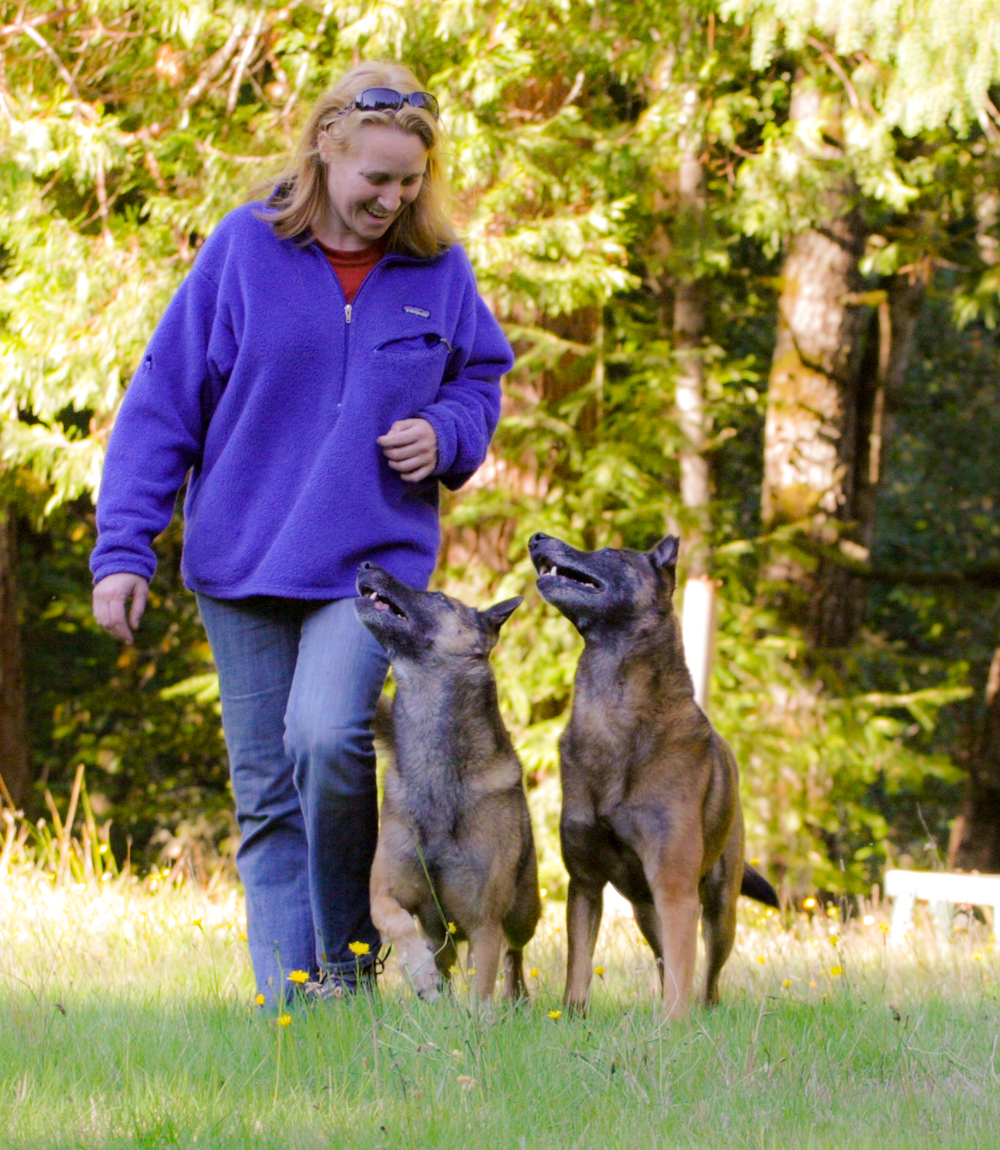 I was conversing with a friend recently who does not train her dogs beyond the minimum required. She does not want to diminish their individuality, to be their master, to break their spirits, to turn them into automatons. She does not even really want them to be obedient—she wants them to do what they want, not her bidding.
I was conversing with a friend recently who does not train her dogs beyond the minimum required. She does not want to diminish their individuality, to be their master, to break their spirits, to turn them into automatons. She does not even really want them to be obedient—she wants them to do what they want, not her bidding.
As we talked, it became clear to me that her idea of training is something very different from mine. She perceives it as diminishing—removing unwanted parts of a dog, while I perceive it as enriching—nurturing and developing additional facets of a dog.
Dog training is a broad catch-all term encompassing a huge range of techniques used to modify the intensity and frequency with which a dog offers certain behaviors. The goals, objectives, and methods are nearly infinite. Of course, in the strictest sense of the word dogs are always learning, so you are always training them whether you mean to or not, you only get to decide what they are learning. But for the purposes of this post, I am talking about structured intentional training, and I want to share why I train my dogs:
Let me start with a few ancillary benefits that I believe accrue from dog training but are not the core reasons I train:
- Fun: virtually every animal I train values training sessions above almost all other activities. Better than food, better than walking, better than swimming—when I pick up the tools and take an
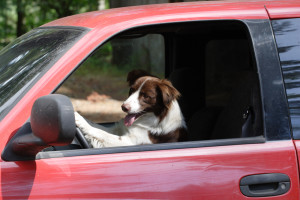 animal to go train they are giddy, ecstatic. They bounce and glow and vibrate. It is pure joy.
animal to go train they are giddy, ecstatic. They bounce and glow and vibrate. It is pure joy. - Proscription: teaching a dog what not to do makes them more pleasant to live with. Do not pee on the floor, pull on the leash, bark, take food off the counter, chew on the electric cords, etc.
- Increased range of opportunities: the world is full of fun places that welcome well-behaved dogs. Friends’ homes, restaurants, busses, concerts; if you have taught your dog to have good manners you can take them on many adventures.
- Skills: Sit, down, stay, wait, fetch, leave-it, all very useful for a dog to know.
- Safety: a dog that comes when called, that does not take things off the counter, that holds a stay, and that can relax in a crate; is safer than a dog that cannot.
- Trust and leadership: your dog learns to look to you when unsure, to rely on your guidance, to come to you for assistance.
- Vocabulary: language and communication make it much easier to live with an animal.
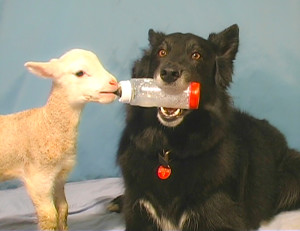
- Activities: training opens up doors to fun shared activities: agility, dock diving, tracking, carting, obedience, if you train, you and your dog can have so much fun doing so many things. You can do these things recreationally or competitively.
- Tricks: many dogs really enjoy showing off, gathering a crowd, making people smile and laugh.
- Fun: okay, I have fun too! I love the challenges, trying to figure out how to induce some new behavior, watching them think, reinforcing in just the right way at just the right moment. I usually end training sessions tired and glowing and happy and fulfilled.
While many of those are valuable, in truth I train my dogs—lots—for two fundamental reasons:
- To maximize their development through education. For the same reasons I would send my child to school: I want to help them actualize their potential. The act of learning, regardless of what one is learning, increases neural development and plasticity. It increases the ability to solve problems, to be thoughtful, to mindfully assess challenges and solve them. Learning begets learning. Learning literally changes and grows their brains. Each day children wonder why they need to learn algebra, what real-world application is there for solving a quadratic equation. And while there are real world applications, the ultimate answer is that what we really want from their education is something different: we want them to become free, thoughtful, kind, effective, confident, happy, engaged, etc.
By choosing what we work on, and how, I can develop drives, increase confidence, improve problem solving skills, alter energy levels, change reactions to various stimuli, decrease contentiousness. I can help them become the best possible version of themselves, the most content, confident, happy, relaxed, enthusiastic, intelligent, well-rounded individuals they can be. - To build connection, relationship, intimacy. I want the best partnership possible. I am not sure I can explain this to someone who has not experienced it, but somewhere after a few hundred hours of shared training time, a partnership develops that simply does not come without those hours. Trust, communication, anticipation—the dance becomes delicate, fluid, nuanced. Your dog knows when to look to you for leadership, knows your subtlest cues, knows how to succeed. You trust your dog, and know how to help him. You can read his every raised eyebrow or
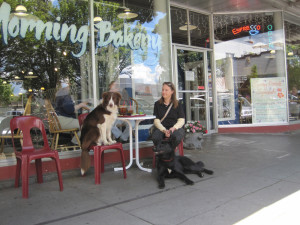 tightened muscle. You are a team.
tightened muscle. You are a team.
Many people have lovely dogs with little training. And many people have rich and fulfilling relationships with their dogs without ever having taught them a single formal behavior. I simply know that in my experience, good training can make great dogs even better and wonderful relationships even deeper.
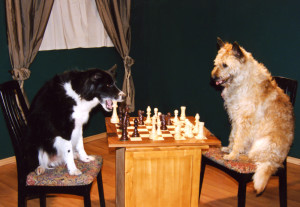

Honey’s breeder mentioned that they don’t train their show dogs much because they want their love of life to show through in the show ring. And I think it was because their idea of training is based in the old-fashioned dominance school (although these people are so gentle with their goldens that I can’t imagine they’d ever do anything to break their dogs’ spirits).
But thanks to the newer understanding of behaviorism in training, I find that a trained dog is very joyful and fun-loving.
I love your two fundamental reasons for training, I’d add a third: So my dog can go with me more places.
Because Honey is a good citizen, she’s is welcomed in restaurants, hotels, campgrounds, etc. And i like having her with me when it’s safe and comfortable for her to go places with me.
Giggle! Honey’s breeder, if she is showing in conformation, has the best trained dogs out there. You can’t win in the breed ring, especially with a highly competitive breed like golden’s without an incredibly well trained dog. They have to be 100% focused on their handler and respond to every change in body language, facial expression and mood. My conformation dogs excel in obedience and agility from day one because all the basics are in place.
I would like to comment on untrained children but I bet I don’t need to. The poor souls don’t have the basic survival skills so fail dismally, and don’t know why.
i am a firm believer in training=bonding. the more time you spend training your dog the closer the bond.
My dog actually got *me* into training. When I first got her, she didn’t know how to play with toys or other dogs. All she wanted to do was interact with me. “Let’s do stuff!” So we did stuff. She got me interested in competition obedience training because she loves heeling so much. Yeah, she’s kind of a weird one LOL.
My favorite thing about training isn’t the end result. It’s the conversation that takes place between me and the animal, and our shared joy when we figure something out together. There’s no other communication quite like it.
[…] Why I Train My Dogs | Talented Animals […]
Wow, another great post. Loving your philosophy on training from what I’ve read so far.
I’ve met pet owners who are worried about changing their dog’s personality too. Like you, I see training as enriching and fun. It enables a dog to have more freedom and a better life, it doesn’t crush the dog’s spirit. It’s sad that some people feel that way about training 🙁
I’m looking forwarding to reading all your other blog posts 🙂
A dog is the only thing on earth that loves you more than you love yourself.
[…] Can be found here: http://talentedanimals.com/blog/why-i-train-my-dogs/ […]
[…] Original: http://talentedanimals.com/blog/why-i-train-my-dogs/ […]